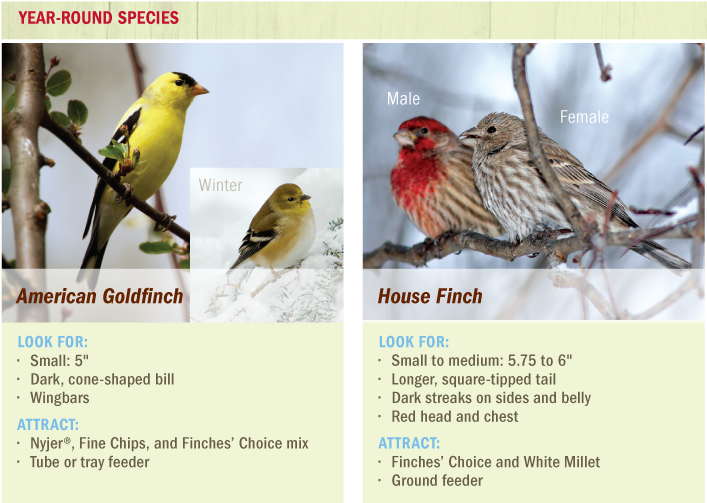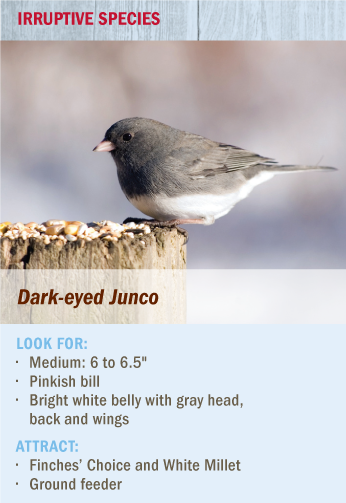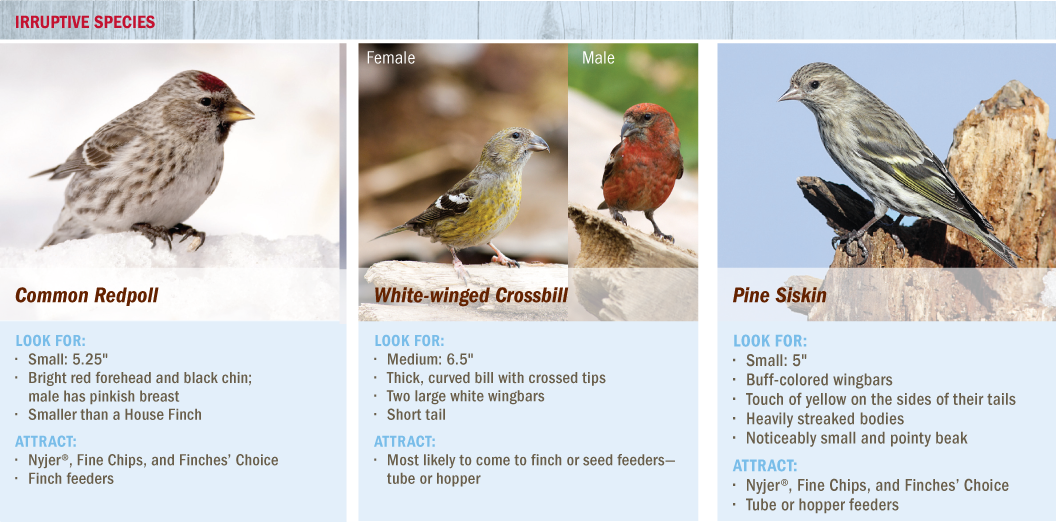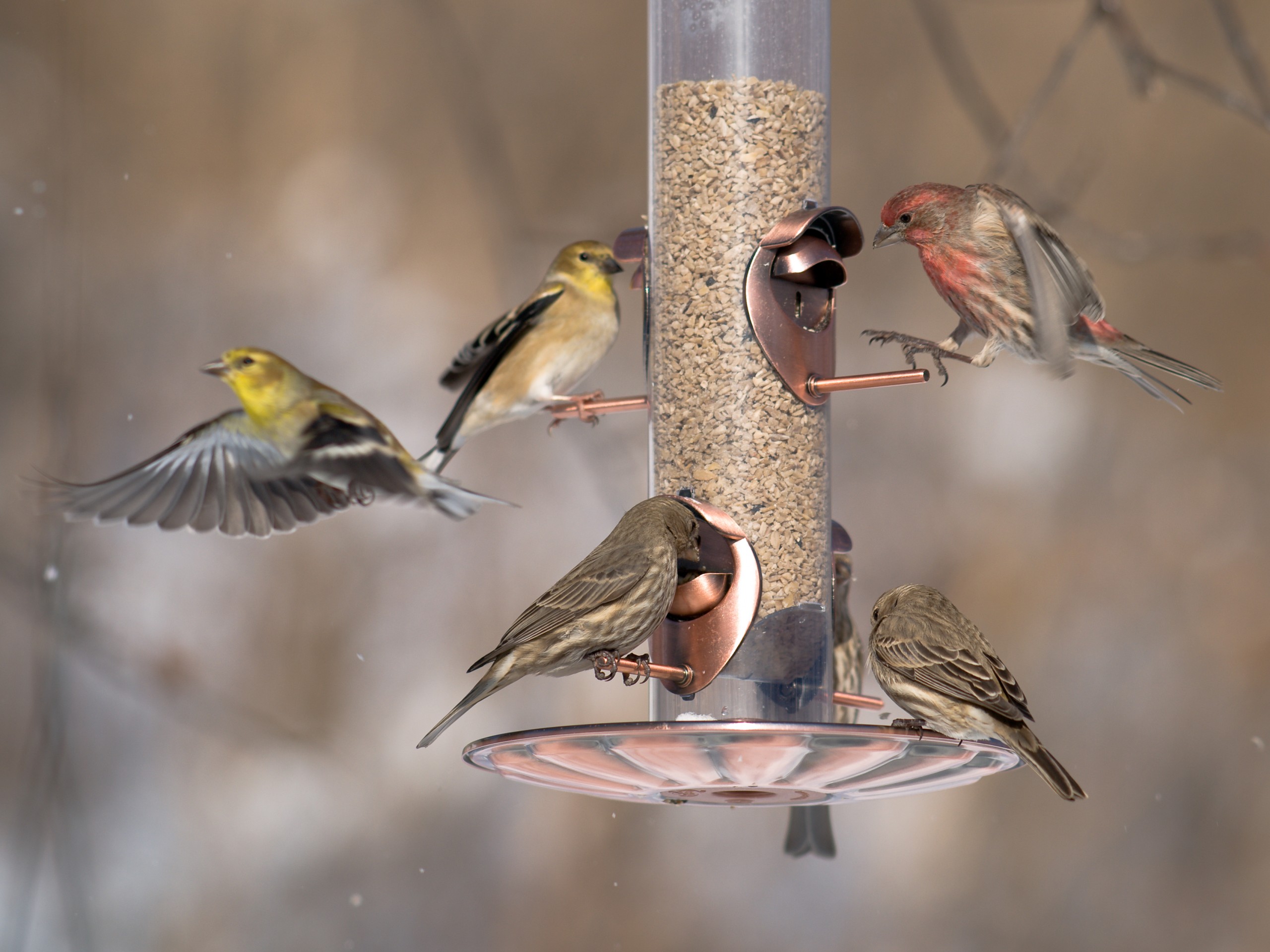IDENTIFYING SIMILAR “LITTLE BROWN BIRDS” AT YOUR FEEDERS THIS WINTER
From our Bird’s-Eye View Newsletter archives: Volume 19, Issue 1
By Guest Contributor MELISSA BLOCK
Part of the joy in backyard birding is identifying and keeping track of the birds that come to your yard over the years. Equipped with a field guide, it’s relatively easy to identify birds like Northern Cardinals, Blue Jays and Black-capped Chickadees based on their colors, sizes or shapes. Other birds, like nuthatches and woodpeckers, display characteristic behaviors that divulge their identities.
Far more tricky can be identifying all of the little brown birds that gather on the ground or at feeders. With similar colors, sizes, shapes, and behaviors, their defining characteristics are less apparent. Further complicating things is that many of these brown birds may be disguised with winter coloring or belong to irruptive species—temporary visitors that are forced into an irregular migration due to habitat changes. Here’s a guide to help you master who’s who at your feeders this winter:

YEAR-ROUND SPECIES
American Goldfinch
While goldfinches are here year-round, they can become difficult to spot in the winter, since males lose their bright yellow feathers and look very similar to females. Goldfinches’ habits change during the winter, too: they form larger flocks, travel over larger areas and expand their diet beyond their summer favorite of Nyjer® to include sunflower chips, canary seed, millet and flax seeds.
House Finch
The House Finch lives here year-round, but like goldfinches they travel in nomadic flocks. One of several types of reddish-colored finches, adult males have a rosy red blush around the face and upper breast. Females do not have the rosy blush; they’re a grayish brown with blurry streaks on their breasts. House finches will eat almost any birdseed.
 IRRUPTIVE SPECIES
IRRUPTIVE SPECIES
Some of our common visiting winter finches, such as Dark-Eyed Juncos, Common Redpolls, Pine Siskins and Crossbills migrate to our area depending on the success of crops they depend on for their food sources. The 2011–12 Finch Forecast predicts fewer migrants this year, since most of the seed crops in outstate areasare excellent.
Dark-eyed Junco
Juncos are the “snowbirds” of the Upper Midwest. They migrate from northern to southern Minnesota in the winter. They prefer to feed on the ground in flocks.

Common Redpoll
Common Redpolls are small finches that typically travel in flocks. Redpolls have internal throat pouches that they fill with seeds, and then they fly to a more protected spot to swallow.
White-winged Crossbill
These rather uncommon finches are either reddish (males) or greenish-yellow (females) in color. They prefer the shelter of spruce and fir forests, but will also come to feeders.
Pine Siskin
Pine Siskins share many characteristics with other finches, making them especially difficult to identify! Tell them apart from the American Goldfinch by their streaked bodies. Distinguish them from House Finches by a smaller size, wingbars and pointier bill; and from Common Redpolls by a lack of red on the forehead.


